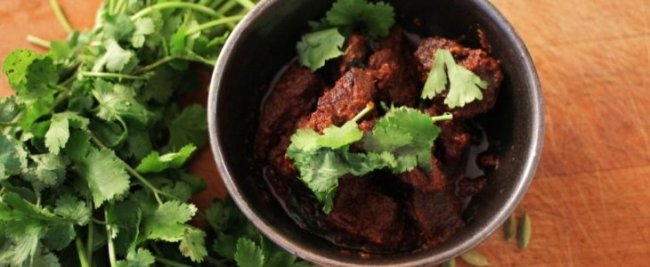Indian cuisine is extremely distinct. One of the main factors being the foreign influences on India by the Moguls, Italians, Portugese, French, English, China and so on… The essence of Indian cuisine lies a lot more in the blending of various spices than sophisticated cooking tactics as observed in several of the European cuisines.
I will attempt and split India into four regions (North, West, East and South) after which generalise the cuisines of these zones.
North:
The northern of India derives a lot of its meals in the Moguls. (Generally known as Mughlai cuisine)
Several of the common meals are:
Mutton Dum Biryani (Rice primarily based dish)
Tandoori kababs (barbecued meat)
Authentic Lamb Korma (Wealthy curries)
Tandoori Roti, Naan, Rumali Roti (Indian Bread)
The state of Punjab in northern india is also famous because of its Tikkas, Parathas and vegetable based preparations like Rajma, Aaloo-gobi and dal makhani.
Delhi is popular for its chaat meals like Paani-Puri, aaloo chaat, cholay bhature.
West:
Western India, getting coastal, includes a great deal of seafood preparations. Goan food features a great deal of Portugese impact which is evident even in the name of the meals:
Pork/Chicken/Seafood Vindaloo
Prawns Xacuti
Seafood/Pork Balchao
They are all spicy curries which are generally eaten with steamed rice.
Chapati (indian wheat bread), Bhakri (Indian bread made from Sorghum and millet) eaten with pickles, vegetable preparations like bhindi-masala (ladyfinger), baingan bharta (Fried Eggplant), Usal (curries made from pulses) is far more prominent within the central-western of India.
South:
The south includes a great deal of range in its cuisine. It truly is popular for the sea-food as well as for a strictly veggie cuisine. It really is famous for the variety of rice preparations it has (Rice getting the staple meals in southern). Several of the well-liked items are:
Chicken Chettinad
Seafood Gassi
Prawn/Fish fr
Beef Chilly
Beef Stew
Tamarind Rice/Lemon Rice/Besibili Rice
Idli (Rice and lentil cake-like preparation but not sweet)
Dosa/Utappa/Appam ( Kind of Indian Pancakes)
Sambar (Vegetable stew eaten with Idli and dosa)
East:
In eastern, all cooking is mostly completed using Mustard oil. This gives a entirely diverse flavor to their meals. Bengali meals features a large amount of British,French and Chinese impacts. A lot of freshwater fish such as Rohu, Betki, Hilsa are consumed here.Many of their preparations include steamed fish and vegetables. This technique of steaming is called “Bhapa”. A few of their popular dishes are:
Macher Jhol (Twice cooked fish)
Sukhto (Mixed vegetable curry)
Aaloo Posto
Bengal is also well-known for its sweets like Rosogulla, mishti dohi and Sondesh.
Street Meals:
India is also very popular for its street meals. A lot of which originated in Bombay. The following’s the list:
Pav-Bhaji
Anda Bhurji
Baida Roti
Vada-Pav
Misal-Pav
Chicken Frankie
Kathi Roll
Category Archives: Uncategorized
Calories per serving of Lamb Korma
Calories per serving of Lamb Korma
————–
Amount Per Serving
Calories 545.0
Total Fat 23.0 g
Saturated Fats 0.0 g
Polyunsaturated Fat 0.0 g
Monounsaturated Fat 0.0 g
Cholesterol 240.0 mg
Sodium 0.0 mg
Potassium 0.0 mg
Total Carbohydrate 5.0 g
Dietary Fiber 2.0 g
Sugars 0.0 g
Protein 80.0 g
*Percent Every day Values are determined by a 2,000 calorie diet plan. Your every day values might be greater or lower based in your calorie requirements.
Lamb Korma is scrumptious to eat and kind for your waistline too. Lamb Korma is an Indian meal exactly where parts of lamb are prepared in a rich and creamy curry sauce and served up with rice, chutney, raita or onion sambal. Made with coriander, cumin, cardamom seeds, ginger, cloves, red pepper and garlic, it smells as excellent as it tastes. Wontons Stuffed with Pork, Cabbage, Scallions and Ginger. Although many people may have bought wontons at their take-out place, there’s nothing like preparing some at house. They’re not that hard to make, and practice makes perfect.
